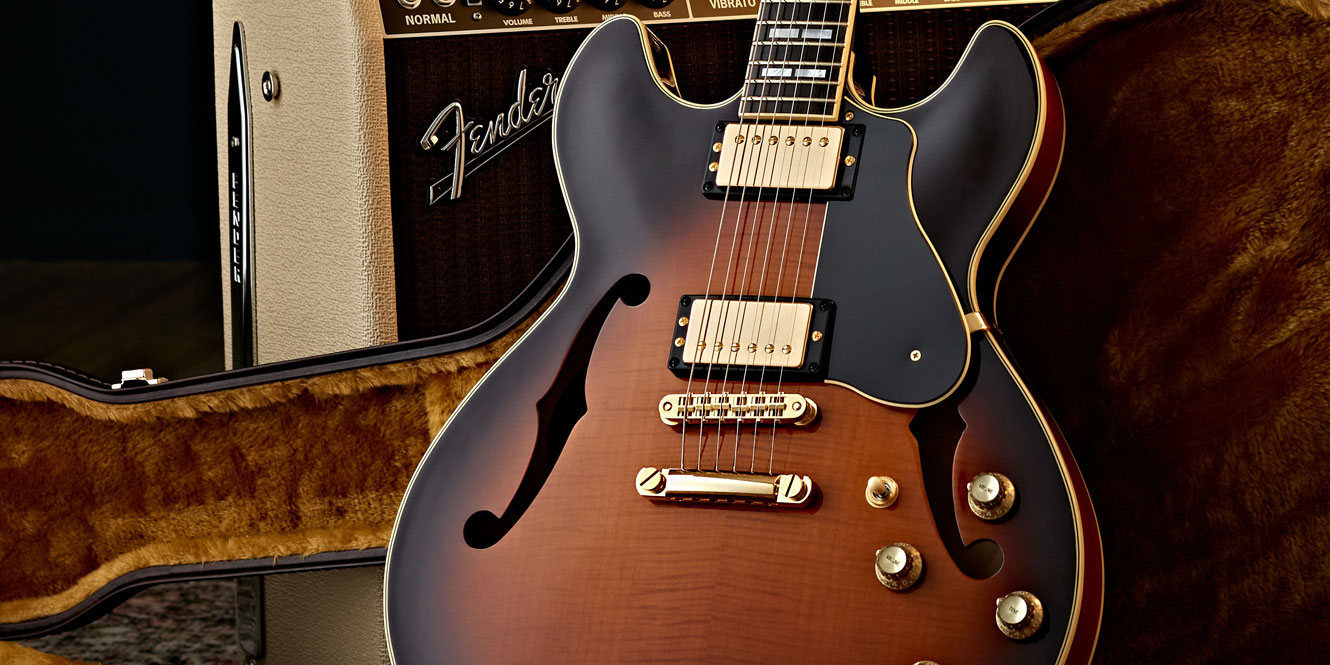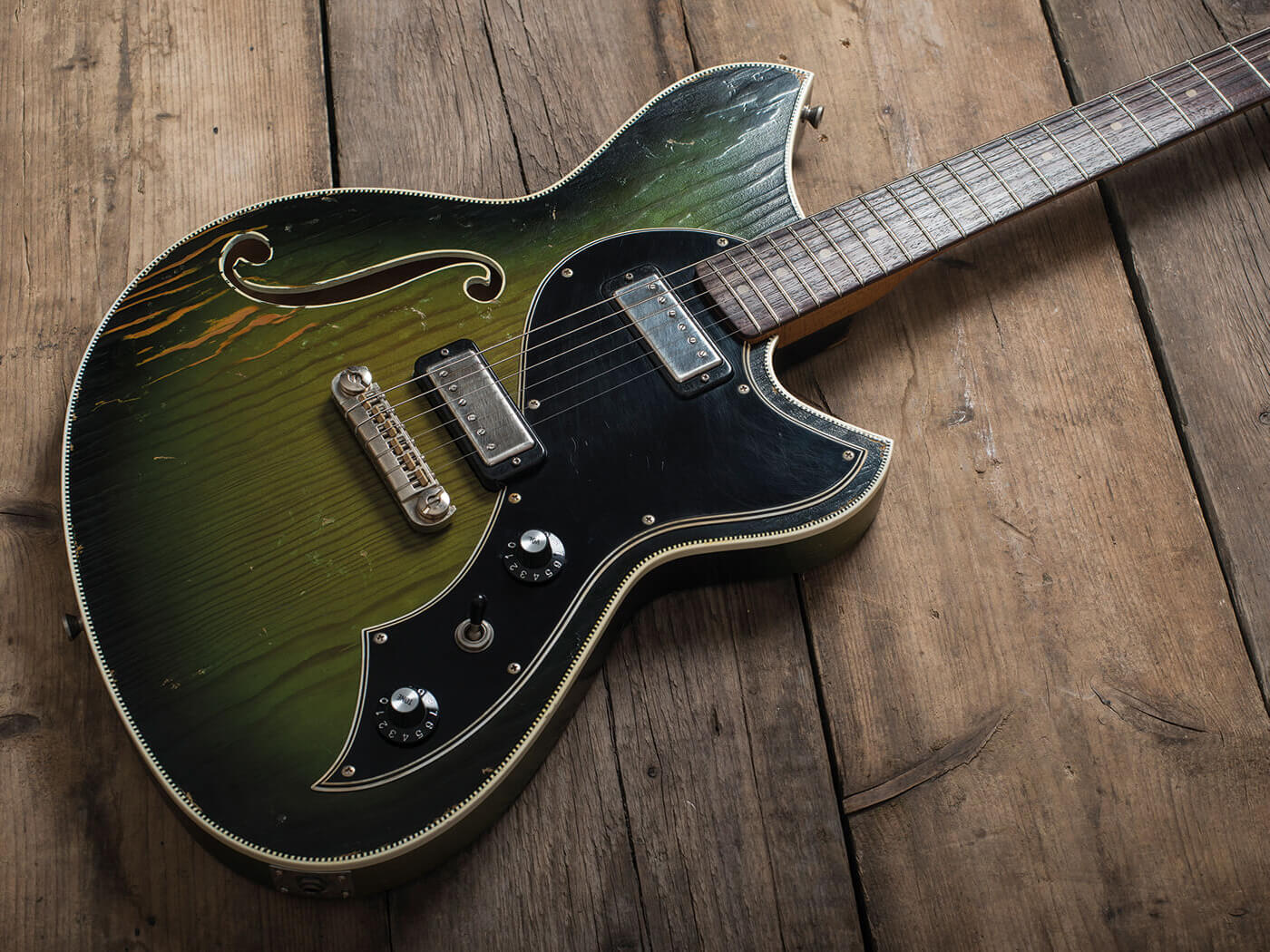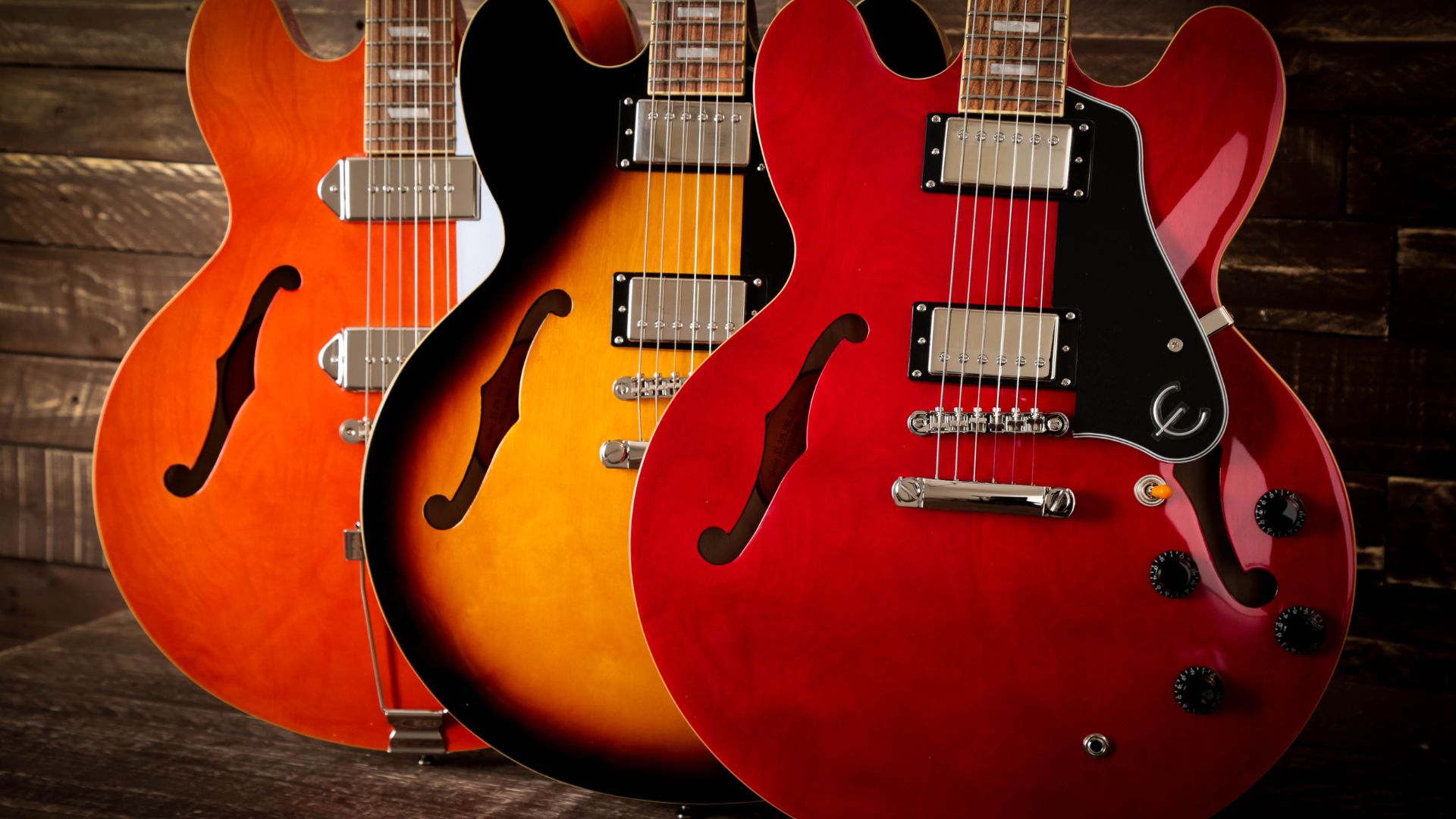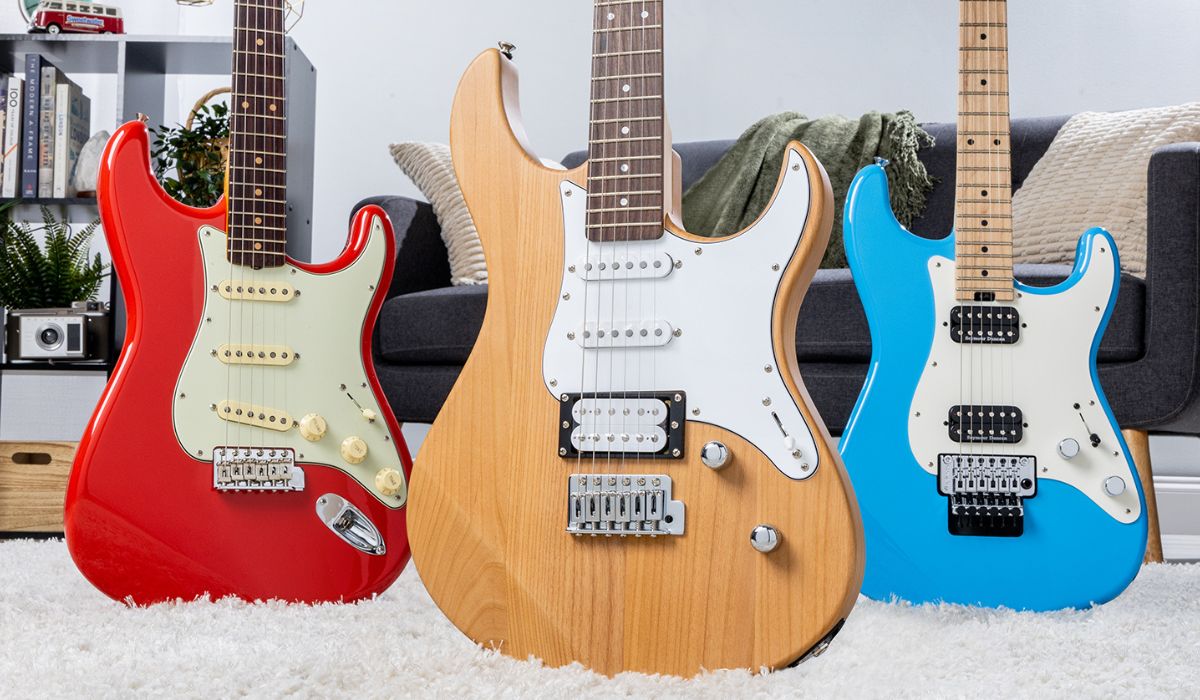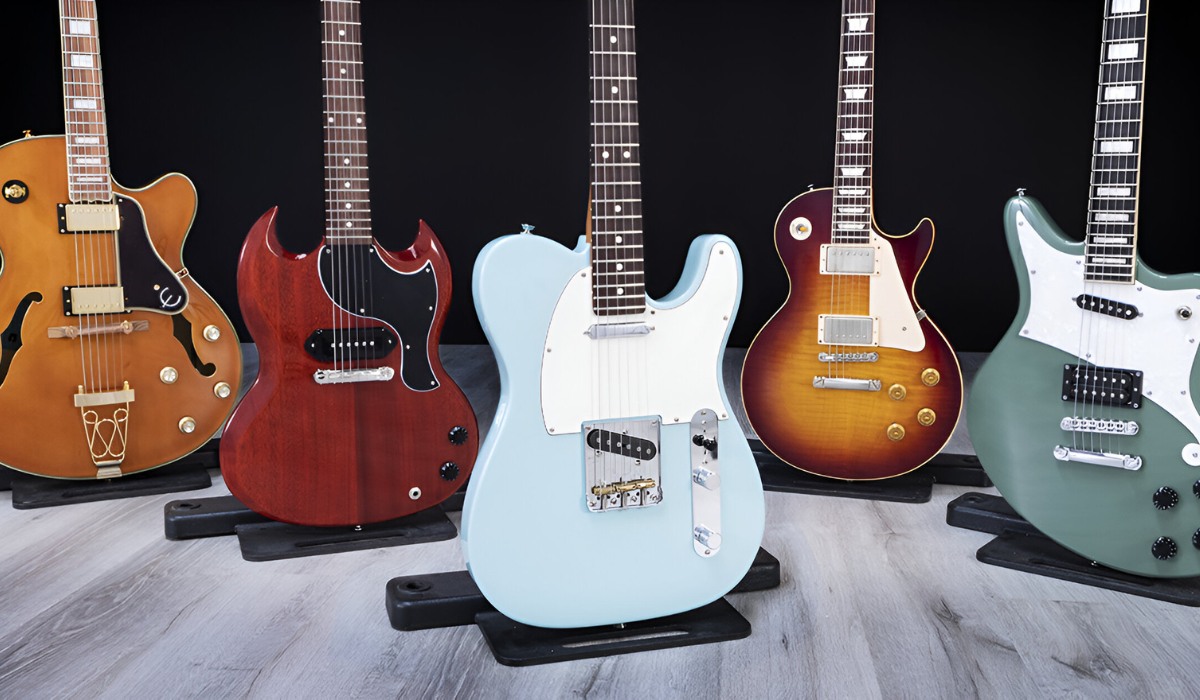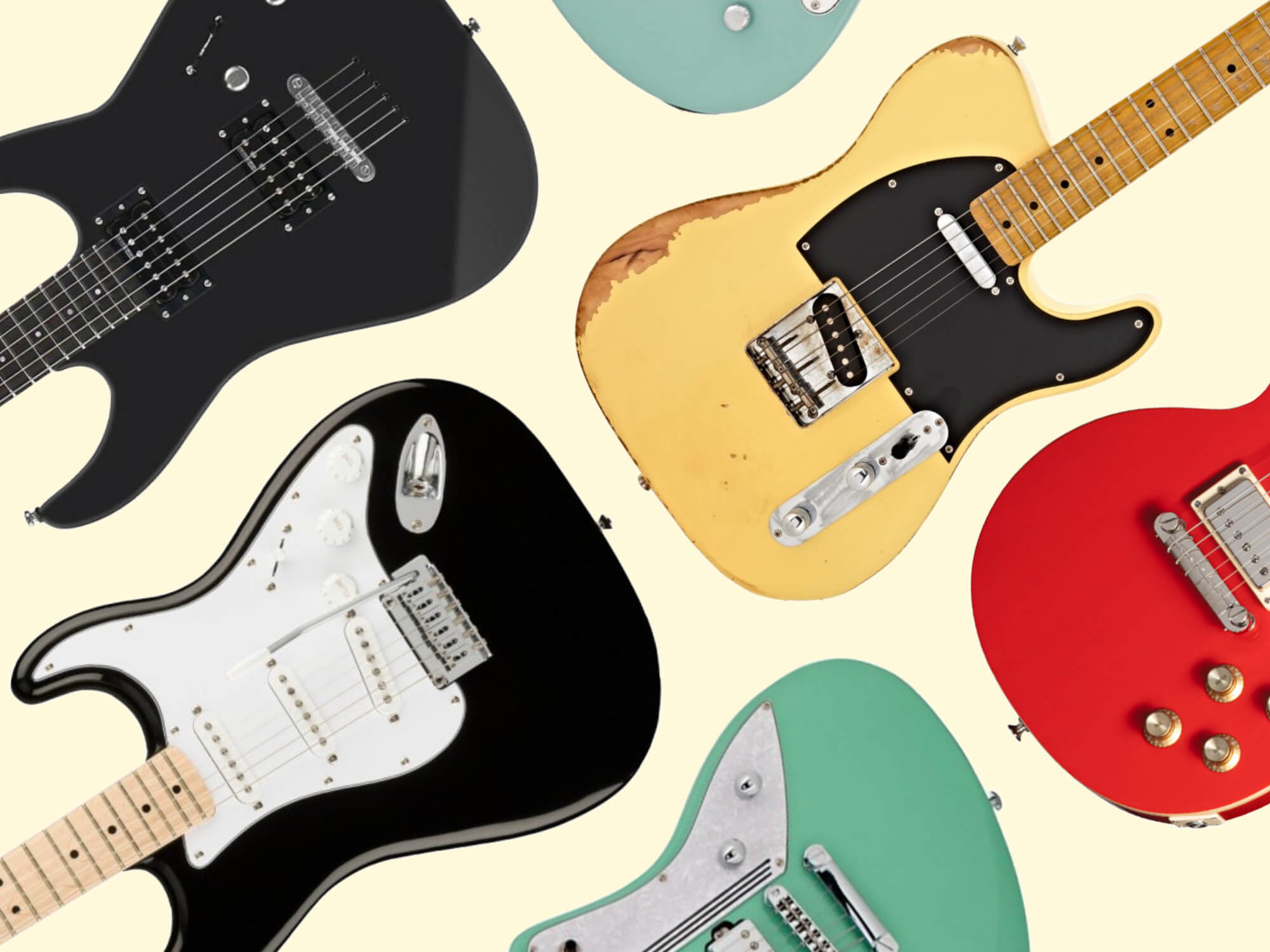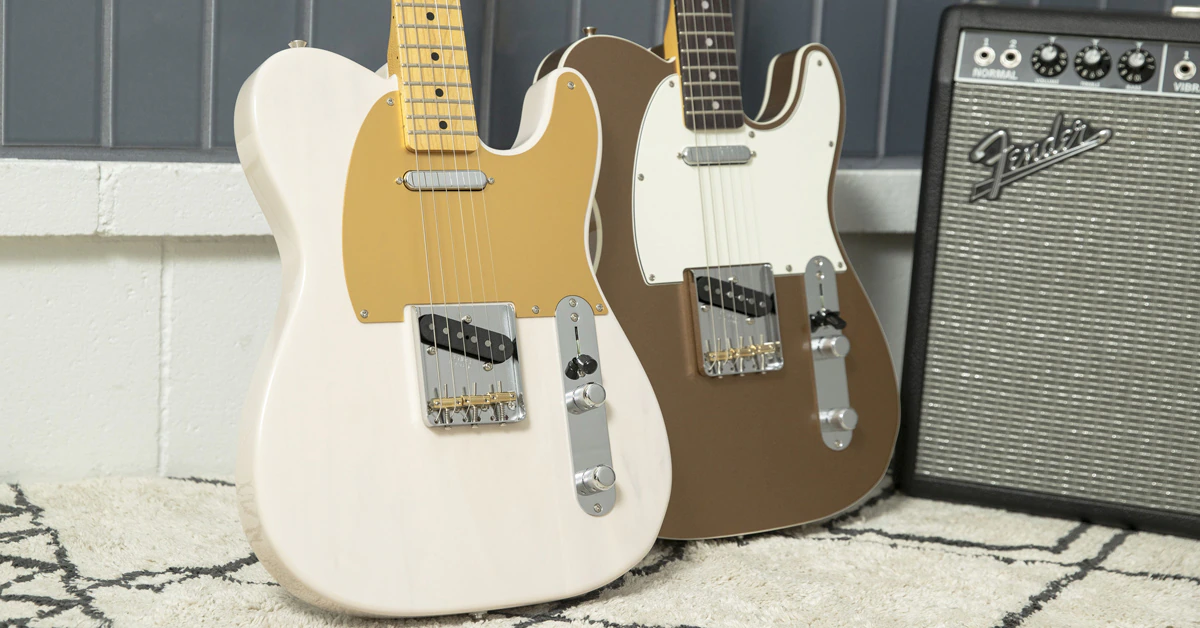Introduction
Semi-hollow electric guitars are an intriguing blend of the classic hollow body and the modern solid body electric guitar. With their distinctive sound and versatile playability, these instruments have carved out a unique space in the world of music. In this article, we will delve into the history, features, advantages, and disadvantages of semi-hollow electric guitars, as well as explore some popular models that have left an indelible mark on the music industry.
Semi-hollow electric guitars are revered for their warm, resonant tones, making them a popular choice across various music genres, from jazz and blues to rock and indie. Their design, which incorporates a solid center block with hollow wings, contributes to their rich, complex sound, striking a balance between the acoustic qualities of a hollow body and the sustain and feedback resistance of a solid body electric guitar.
These guitars have a storied history, evolving from early experiments in acoustic amplification to becoming iconic instruments synonymous with legendary musicians and defining musical movements. Understanding the unique characteristics and nuances of semi-hollow electric guitars is essential for musicians and enthusiasts alike, as it enables a deeper appreciation of their sonic capabilities and the distinct playing experience they offer.
Throughout this article, we will uncover the defining features of semi-hollow electric guitars, explore their evolution and influence on music, and provide insights into their advantages and limitations. By the end, you will have a comprehensive understanding of these captivating instruments and the impact they have had on the world of music. So, let's embark on this journey to unravel the allure and artistry of semi-hollow electric guitars.
What are Semi-Hollow Electric Guitars?
Semi-hollow electric guitars, also known as semi-acoustic guitars, are a unique hybrid of the traditional hollow-body and solid-body electric guitars. Their construction features a solid wood block running through the center of the body, while the wings or sides are hollow. This design allows for a blend of acoustic and electric guitar characteristics, resulting in a distinctive sound and versatile playing experience.
One of the defining features of semi-hollow electric guitars is their f-shaped sound holes, reminiscent of those found on acoustic guitars. These apertures contribute to the resonance and acoustic-like qualities of the instrument, enhancing its tonal complexity. The hollow wings of the guitar also play a crucial role in shaping its sound, providing a level of airiness and natural reverberation that sets it apart from solid-body electric guitars.
Typically, semi-hollow electric guitars are equipped with one or more pickups, enabling them to be amplified for live performances and recording. The combination of the semi-hollow body design and pickups results in a unique tonal palette, offering a wide range of sounds that can be tailored to suit various musical styles and playing techniques.
These guitars are renowned for their warm, mellow tones, making them well-suited for genres such as jazz, blues, and classic rock. However, their versatility extends to other musical styles, including indie rock, country, and alternative music, where their distinct sonic characteristics add depth and dimension to the music.
Overall, semi-hollow electric guitars represent a harmonious fusion of acoustic and electric elements, offering musicians a platform to explore a diverse sonic landscape. Their unique construction and tonal properties make them a compelling choice for players seeking a blend of traditional warmth and modern versatility in their musical endeavors.
History of Semi-Hollow Electric Guitars
The origins of semi-hollow electric guitars can be traced back to the early 1930s when the quest for amplified sound led to the development of electrified hollow-body instruments. Pioneering luthiers and inventors sought to address the feedback issues associated with traditional hollow-body guitars by experimenting with designs that incorporated a solid center block. This innovation marked the birth of semi-hollow electric guitars, which offered enhanced resistance to feedback while retaining the acoustic-like qualities of their hollow counterparts.
One of the seminal moments in the history of semi-hollow electric guitars occurred in the late 1950s when renowned guitar maker Gibson introduced the ES-335. This iconic model featured a semi-hollow body with a solid maple block running through its center, heralding a new era in electric guitar design. The ES-335 quickly gained popularity among musicians for its warm, resonant tone and versatile playability, becoming a staple in genres such as jazz, blues, and rock.
During the same period, rival guitar manufacturer, Fender, introduced the Coronado, another influential semi-hollow electric guitar model. The Coronado showcased Fender’s foray into the semi-hollow guitar market, offering a unique tonal character and design distinct from Gibson’s offerings. This era saw an explosion of creativity and innovation, with various guitar makers introducing their interpretations of semi-hollow electric guitars, each contributing to the instrument’s evolution and popularity.
As the decades progressed, semi-hollow electric guitars continued to leave an indelible mark on the music industry, with legendary musicians embracing their distinctive sound. From the melodic jazz lines of Larry Carlton to the soulful blues riffs of B.B. King, these guitars found favor among a diverse array of artists, cementing their status as enduring musical instruments.
Today, the legacy of semi-hollow electric guitars lives on, with modern iterations incorporating innovative features while staying true to the essence of their predecessors. Their rich history and enduring allure make them a timeless choice for musicians seeking a unique sonic identity and a touch of vintage charm in their musical expression.
How Semi-Hollow Electric Guitars Differ from Solid Body Guitars
Semi-hollow electric guitars and solid body guitars represent two distinct branches of the electric guitar family, each offering unique characteristics and sonic qualities. Understanding the differences between these two types of instruments is essential for musicians seeking to make an informed choice based on their playing style and tonal preferences.
One of the primary distinctions between semi-hollow electric guitars and solid body guitars lies in their construction. Solid body guitars, as the name suggests, are crafted from a single, solid piece of wood, resulting in a dense, resonant-free body. This design contributes to their sustain and resistance to feedback, making them well-suited for high-gain amplification and aggressive playing styles commonly associated with rock and metal music.
In contrast, semi-hollow electric guitars feature a central solid block with hollow wings or sides, blending the acoustic resonance of a hollow body guitar with the sustain and feedback resistance of a solid body guitar. This design imparts a unique tonal character, characterized by warmth, richness, and a touch of natural reverb, making them ideal for genres that benefit from a more nuanced and expressive sonic palette, such as jazz, blues, and classic rock.
Another notable difference between the two guitar types is their tonal characteristics. Solid body guitars are renowned for their clarity, brightness, and powerful midrange, attributes that lend themselves well to cutting through dense mixes and delivering articulate, punchy tones. On the other hand, semi-hollow electric guitars offer a more rounded, mellow sound with enhanced harmonic complexity, providing a lush, organic tonal profile that adds depth and character to musical compositions.
Furthermore, the playing experience and feel of semi-hollow electric guitars differ from that of solid body guitars. The semi-hollow design introduces a level of acoustic-like responsiveness and resonance, offering players a tactile connection to the instrument’s sound and dynamics. This tactile feedback can influence a player’s approach to phrasing, dynamics, and expression, contributing to a more immersive and emotive playing experience.
Ultimately, the choice between a semi-hollow electric guitar and a solid body guitar hinges on the player’s musical preferences, playing style, and sonic aspirations. Both types of guitars offer distinct sonic signatures and playing experiences, catering to a diverse range of musical genres and artistic sensibilities.
Advantages of Semi-Hollow Electric Guitars
Semi-hollow electric guitars boast a range of compelling advantages that have solidified their status as sought-after instruments among musicians across various genres. Understanding these advantages provides valuable insight into the unique qualities and sonic capabilities that make semi-hollow guitars a preferred choice for many players.
- Versatile Tonal Palette: One of the standout advantages of semi-hollow electric guitars is their ability to deliver a diverse range of tones. The combination of the semi-hollow body design and pickups yields warm, resonant sounds with a touch of natural reverb, making them well-suited for genres such as jazz, blues, and classic rock. Additionally, their tonal versatility allows players to explore different sonic textures and adapt to various musical styles with ease.
- Acoustic-like Resonance: The semi-hollow construction imparts an acoustic-like responsiveness and resonance to these guitars, enhancing their expressive capabilities. This feature enables players to infuse their performances with dynamic nuances, subtle articulations, and emotive phrasing, adding depth and character to their musical expression.
- Reduced Weight and Comfort: Compared to solid body guitars, semi-hollow electric guitars often exhibit a lighter weight, making them more comfortable for extended playing sessions. The balanced distribution of weight across the instrument contributes to a more ergonomic playing experience, reducing strain and fatigue during prolonged performances or practice sessions.
- Feedback Resistance: Semi-hollow electric guitars offer a degree of feedback resistance, thanks to the solid center block that mitigates the potential for uncontrollable feedback at higher volumes. This feature allows players to achieve higher gain settings and explore expressive playing techniques without compromising tonal integrity or encountering disruptive feedback issues.
- Visual Appeal: Beyond their sonic attributes, semi-hollow electric guitars often exude a vintage aesthetic charm, featuring elegant f-shaped sound holes and a timeless design that appeals to musicians and enthusiasts alike. The visual allure of these instruments adds a touch of nostalgia and sophistication to live performances and studio recordings, enhancing the overall stage presence and artistic appeal.
Collectively, these advantages underscore the allure and practical benefits of semi-hollow electric guitars, positioning them as versatile, expressive, and visually captivating instruments that continue to inspire musicians and enrich musical compositions across diverse genres.
Disadvantages of Semi-Hollow Electric Guitars
While semi-hollow electric guitars offer a compelling array of sonic and ergonomic benefits, they are not without certain drawbacks that warrant consideration for musicians exploring their instrument options. Understanding these disadvantages provides valuable insight into the practical limitations and considerations associated with semi-hollow guitars.
- Susceptibility to Feedback: Due to their partially hollow construction, semi-hollow electric guitars are more susceptible to feedback compared to solid body guitars, particularly when played at higher volumes or in close proximity to loud amplification. This feedback sensitivity can pose challenges in certain performance environments and requires careful management of amplifier settings and stage positioning to mitigate potential issues.
- Complexity of Construction: The construction of semi-hollow electric guitars, with their combination of solid and hollow elements, can introduce additional complexities in manufacturing and maintenance. The intricate design may necessitate specialized expertise and care when addressing issues such as internal wiring, structural integrity, or modifications, potentially leading to higher maintenance costs and technical considerations.
- Tonal Balance and Control: While the tonal complexity of semi-hollow guitars is often celebrated, some players may find it challenging to achieve precise tonal control and balance, especially in high-volume settings or when aiming for a more defined, focused sound. The inherent acoustic resonance and harmonically rich nature of these guitars may require nuanced adjustments and playing techniques to achieve desired tonal outcomes in certain musical contexts.
- Limited High-Gain Applications: Semi-hollow electric guitars are generally less suited for high-gain, heavily distorted sounds compared to solid body guitars, as their acoustic-like properties and feedback susceptibility may pose challenges in achieving tight, saturated tones at extreme gain levels. While this limitation may not be a concern for players focused on cleaner or moderately overdriven tones, it can impact the versatility of these guitars in certain musical genres.
- Weight and Balance Considerations: Despite their lighter weight compared to some solid body guitars, the balance and ergonomic considerations of semi-hollow instruments may vary among different models, impacting the comfort and playability for individual players. Finding a suitable balance and weight distribution that aligns with a player’s preferences and physical comfort is essential for optimizing the playing experience.
By acknowledging these disadvantages, musicians can make informed decisions when evaluating the suitability of semi-hollow electric guitars for their musical pursuits, weighing the unique sonic and ergonomic attributes of these instruments against the practical considerations inherent in their design.
Popular Semi-Hollow Electric Guitar Models
Several iconic semi-hollow electric guitar models have left an indelible mark on the music industry, captivating musicians with their distinctive tones, timeless designs, and influential legacies. These instruments have played pivotal roles in shaping musical genres and defining the sonic landscape, earning reverence from players and enthusiasts worldwide. Here are some notable semi-hollow electric guitar models that have achieved legendary status:
- Gibson ES-335: The Gibson ES-335 stands as a paragon of semi-hollow electric guitar design, revered for its timeless elegance and versatile tonal character. Introduced in the late 1950s, the ES-335 features a classic semi-hollow body construction with f-shaped sound holes, delivering warm, resonant tones that have become synonymous with genres such as blues, jazz, and rock. Its enduring popularity and enduring influence have solidified its status as an iconic instrument in the world of electric guitars.
- Fender Coronado: Fender’s foray into the semi-hollow guitar realm resulted in the creation of the Coronado, a distinctive model that diverged from the traditional Fender solid body designs. The Coronado’s striking aesthetic, featuring a bound f-hole, elegant appointments, and a rich tonal palette, garnered attention from musicians seeking a different sonic identity. Its unique construction and tonal versatility have secured its place as a revered semi-hollow electric guitar model with a devoted following.
- Epiphone Casino: The Epiphone Casino has earned its place in music history through its association with legendary artists such as The Beatles. Renowned for its lively, jangly tones and lightweight, fully hollow body, the Casino has become an emblem of vintage charm and musical innovation. Its distinctive sound and timeless appeal have cemented its position as a beloved semi-hollow electric guitar model cherished by musicians across genres.
- Gretsch Streamliner: The Gretsch Streamliner series represents a modern interpretation of semi-hollow electric guitars, offering players a blend of vintage aesthetics and contemporary performance. With its captivating sound, eye-catching finishes, and ergonomic design, the Streamliner has garnered acclaim for its affordability and playability, making it an accessible option for musicians seeking the allure of semi-hollow guitars.
- Ibanez Artcore Series: Ibanez’s Artcore series has established a strong presence in the semi-hollow guitar market, providing an extensive range of models tailored to diverse musical styles and player preferences. From the affordable AS53 to the premium AS200, the Artcore series embodies craftsmanship, tonal versatility, and visual appeal, offering players an array of semi-hollow electric guitars that cater to a wide spectrum of musical expressions.
These iconic semi-hollow electric guitar models represent a fraction of the diverse and influential instruments that have shaped the sonic landscape of modern music. Their enduring legacies and continued relevance in the music industry underscore the timeless allure and artistic significance of semi-hollow electric guitars.
Conclusion
The world of music is enriched by the captivating allure and distinctive sonic qualities of semi-hollow electric guitars. From their storied history and influential contributions to their versatile tonal palette and timeless designs, these instruments hold a revered place in the hearts of musicians and enthusiasts. Their ability to seamlessly blend acoustic resonance with electric power has transcended genres and eras, leaving an indelible mark on the musical landscape.
As we journeyed through the exploration of semi-hollow electric guitars, we uncovered their evolution from early experiments in amplified sound to becoming iconic instruments synonymous with legendary musicians and defining musical movements. Their warm, resonant tones and versatile playability have made them a popular choice across various genres, from jazz and blues to rock and indie, showcasing their adaptability and enduring relevance in contemporary music.
While acknowledging the practical considerations and limitations associated with these instruments, such as feedback susceptibility and tonal nuances, it is evident that the advantages of semi-hollow electric guitars, including their acoustic-like resonance, tonal versatility, and visual appeal, outweigh these drawbacks for many musicians. Their timeless designs and influential legacies, embodied in iconic models such as the Gibson ES-335, Fender Coronado, Epiphone Casino, Gretsch Streamliner, and Ibanez Artcore series, continue to inspire creativity and musical innovation.
Ultimately, the allure and artistry of semi-hollow electric guitars lie in their ability to bridge the gap between tradition and modernity, offering musicians a platform to explore a diverse sonic landscape while embracing the vintage charm and expressive capabilities that define these instruments. As they continue to captivate players and audiences alike, semi-hollow electric guitars remain an essential component of the musical tapestry, enriching compositions, performances, and artistic expressions with their timeless resonance and enduring appeal.







